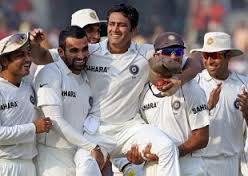THE HINDU EDITORIAL : OCTOBER 27, 2017

THE HINDU EDITORIAL : OCTOBER 27, 2017
a) A bold step in bank reform
With India’s economic growth faltering in the last couple of years, the government has been casting about for ways to galvanise the economy. Last November, it tried demonetisation. It was a bold move but its economic benefits will be long in coming while the short-term disruption has been very real and demoralising. This year, it pushed through the goods and services tax (GST). Again, this is hugely positive over the medium term, but is painful in the short run.
Cheering the markets
The government seems to have realised that a simpler, more effective remedy is at hand: recapitalising public sector banks (PSBs) and enhancing the flow of credit. The proposal to recapitalise PSBs to the extent of ₹2.11 trillion (₹2.11 lakh crore) is a winner by any reckoning. It is, perhaps, the most effective way to provide a much-needed fiscal stimulus to the economy and revive growth. Small wonder that the markets have given the move a rapturous welcome. To understand the significance of bank recapitalisation, we need a little primer on bank capital. Regulation requires that banks hold assets only in proportion to the capital they have. ‘Capital’ is a combination of equity, equity-like instruments and bonds. For a given balance sheet, there is a certain minimum of capital that banks must hold. This is called ‘capital adequacy’. The higher the capital is above the regulatory minimum, the greater the freedom banks have to make loans. The closer bank capital is to the minimum, the less inclined banks are to lend. If capital falls below the regulatory minimum, banks cannot lend or face restrictions on lending. When loans go bad and turn into non-performing assets (NPAs), banks have to make provisions for potential losses. This tends to erode bank capital and put the brakes on loan growth. That is precisely the situation PSBs have been facing since 2012-13. ‘Stressed advances’ (which represent non-performing loans as well as restructured loans) have risen from a little over 10% in 2012-13 to 15% in 2016-17. This has caused capital adequacy at PSBs to fall. Average capital at PSBs has fallen from over 13% in 2011-12 to 12.2% in 2016-17. The minimum capital required is 10.5%. An estimated 10 out of 20 PSBs have capital of just one percentage point above the minimum or less. Inadequate capital at PSBs has taken its toll on the flow of credit. Growth in credit has fallen below double digits over the last three years. Between 2009-10 and 2014-15, annual credit growth was in the range of 15-20%. In the ‘India Shining’ period of 2004-09, credit growth had been over 20%. Some observers ascribe the deceleration in credit growth to poor demand. They say that corporates have excessive debt and are in no position to finance any investment. This may be true of large corporates. However, it is not true of enterprises in general. One study, which covered over 4,000 companies, showed that the debt to equity ratio fell below 0.8 (which is a low level of debt) in 2008-09 and remained low until 2012-13. (J. Dennis Rajakumar, ‘Are corporates overleveraged?’, Economic and Political Weekly, October 31, 2015). Moreover, demand for investment finance may have decelerated but demand for working capital remains strong. If anything, the introduction of GST has increased small business demand for working capital. Low growth in credit is confined to PSBs. Private banks have seen loan growth of 15% this year.
Evident since 2014
The government has realised that there is a problem with the supply of credit. It has to do with PSBs’ inability to lend for want of adequate capital. The National Democratic Alliance (NDA) government should have recognised the problem when it assumed office in May 2014. At the time, stressed advances were already 10% of the total. The NDA government should have moved swiftly to recapitalise PSBs. Instead, it chose to sweep the problem under the carpet. Market estimates had placed the requirement of government capital at a minimum of ₹2 lakh crore over a four-year period. In 2015, under the Indradhanush Plan, the government chose to commit a mere ₹70,000 crore over the period. The dominant view in government at the time seemed to be that PSBs had messed up in a big way, so putting more capital into them was simply ‘money down the drain’. Their role needed to be shrunk through consolidation or by selling strategic stakes to private investors. This is a mistaken view. The bad loan problem at PSBs is not entirely the result of mismanagement. There have certainly been cases of malfeasance and poor appraisal of credit. However, as the Economic Survey of 2016-17 made clear, these are not responsible for the bulk of the NPA problem. The problem is overwhelmingly the result of factors extraneous to management. PSBs, unlike their private sector counterparts, had lent heavily to infrastructure and other related sectors of the economy. Following the global financial crisis of 2007, sectors to which PSBs were exposed came to be impacted in ways that could not have been entirely foreseen. Blaming PSBs for the outcomes and starving them of capital was not the answer. The failure to quickly recapitalise PSBs has adversely impacted the economy in many ways. First, it has come in the way of adequate supply of credit. Second, it has hindered the effective resolution of the NPA problem and kept major projects from going through to completion. Resolution requires banks to write-off a portion of their loans in order to render projects viable. They cannot do so if they see that write-offs will cause their capital to fall below the regulatory minimum. Third, corporates are stuck with high levels of debt and are unable to make fresh investments. The government’s move to recapitalise banks changes the picture. Of the ₹2.11 trillion package, ₹1.35 trillion will be towards issue of recapitalisation bonds. PSBs will subscribe to these bonds. The government will plough back the funds into banks as equity. Another ₹180 billion will be provided as budgetary support. The remaining ₹580 billion will be raised from the market. Analysts believe the package should enable banks to provide adequately for NPAs and support modest loan growth. Once PSBs have enough capital and are in a mood to lend, they can liquidate excess holding of government securities and use the cash to make more loans. Analysts worry about the fiscal impact of the recapitalisation package. International norms allow borrowings for bank recapitalisation not to be counted towards the fiscal deficit. In the past, India has used this accounting fudge. The proposed recapitalisation bonds are likely to add to the fiscal deficit unless the government resorts to other fudges such as getting the Life Insurance Corporation of India or a separate holding company to issue the bonds. The government should not worry unduly about missing the fiscal deficit target of 3.2% of GDP. The markets will understand that the fiscal stimulus is well spent.
Getting the record straight
Analysts also fret over repeated bailouts of PSBs and the costs to the exchequer. They seem to think that bank bailouts have to do with government ownership and inefficiency and the answer is to privatise some of our PSBs. They couldn’t be more wrong. The overwhelming majority of bank systems worldwide are privately owned. And yet these systems are prone to periodic bouts of bank failures. The International Monetary Fund has documented 140 episodes of banking crises in 115 economies in the world in the period 1970-2011. The median cost of bank recapitalisation in these crises was 6.8% of GDP. India’s cost of recapitalisation over a 20-year period is less than 1% of the average GDP during this period. The Modi government has shown courage in opting for substantial recapitalisation of banks. This is not something that fits into the ‘reform’ mantra whereby private is good and public is bad. Reserve Bank of India Governor Urjit Patel has welcomed the move in effusive terms: “The Government of India’s decisive package to restore the health of the Indian banking system is in the view of the [RBI] a monumental step forward in safeguarding the country’s economic future.” Indeed. The government’s recapitalisation move promises to do more to quickly usher in ‘acche din’ than any other single measure it has initiated during its tenure.
b) The Gujarat stakes: on Assembly election 2017
It is in no small part due to Prime Minister Narendra Modi and Bharatiya Janata Party president Amit Shah that Gujarat wields a disproportionately high influence on national politics. The so-called Gujarat model of development was an important part of the BJP’s campaign in the 2014 Lok Sabha election. To say that the Gujarat Assembly election of 2012 had a huge bearing on the parliamentary election that followed in less than two years will be no exaggeration. For the same reasons, Gujarat 2017 carries an additional layer of importance: whether for the Congress or the BJP, a win or a loss will cast a much longer shadow until the summer of 2019. The two-phase polls on December 9 and 14 will thus be keenly fought, with the BJP seeking a sixth straight win, and the Congress trying for a breakthrough against all odds. The timing of the announcement of the election schedule itself became a controversy, as Chief Election Commissioner A.K. Joti faced criticism for delaying it till after Mr. Modi had made two more visits to Gujarat to inaugurate projects and announce new schemes. The argument that flood relief work in the State would have been affected if the schedule had been announced along with that of the election in Himachal Pradesh, which is ruled by the Congress, was not very convincing. One, relief work had been mostly completed, and two, the Model Code of Conduct would not have stood in the way of such works. However, when the votes are counted, what would have mattered is not the two-week delay in the announcement, but the BJP’s performance over the last five years. Also the Congress’s ability to offer a viable alternative. On the debit side of the political ledger for the BJP, Mr. Modi is not the chief ministerial candidate in Gujarat and may not be able to cash in on his charisma the way he did in previous elections. The three years since Mr. Modi moved to the Centre have not been the best for Gujarat in terms of governance. The BJP had to replace Anandiben Patel, who succeeded Mr. Modi as Chief Minister, with Vijay Rupani in order to infuse more life into the administration. But the Congress does not seem to be well-placed to press the advantage. It is reduced to seeking the support of leaders of caste groups to make a dent in the BJP’s vote bank. The wooing of the Patidar leader Hardik Patel and Dalit leader Jignesh Mevani, and the induction of Alpesh Thakor, a leader of a backward classes grouping, into the Congress might have brought an accretion to its vote bank, but the party will not get far by artificially yoking together leaders with support bases locked in social conflict. These youthful leaders in the company of Congress vice-president Rahul Gandhi will need much more in common than a desire to vote the BJP out. Without presenting a cohesive programme, this nascent, loose alliance will have no game-changing impact.
WORDS/ VOCABULARY
1) Faltering
Meaning: Lose strength or momentum.
Example: The music faltered, stopped, and started up again.
Synonyms: Hesitate, Delay
Antonyms: Oscillate, Stall
2) Seems
Meaning: Used to suggest in a cautious or polite way that something is the case.
Example: It would seem that he has been fooling us all.
3) Reckoning
Meaning: The action or process of calculating or estimating something.
Example: The sixth, or by another reckoning eleventh, Earl of Mar.
Synonyms: Calculation, Estimation
4) Perhaps
Meaning: Used to express uncertainty or possibility.
Example: Perhaps I should have been frank with him.
Synonyms: Maybe, Possibly
5) Fiscal
Meaning: Relating to government revenue, especially taxes.
Example: Monetary and fiscal policy.
Synonyms: Tax, Revenue
6) Revive
Meaning: Restore interest in or the popularity of.
Example: Many pagan traditions are being revived.
Synonyms: Reintroduce, Re-establish
Antonyms: Abolish
7) Rapturous
Meaning: Characterized by, feeling, or expressing great pleasure or enthusiasm.
Example: He was greeted with rapturous applause.
Synonyms: Ecstatic, Joyful
Antonyms: Bored, Indifferent
8) Primer
Meaning: An elementary textbook that serves as an introduction to a subject of study or is used for teaching children to read.
Example: A first-year philosophy primer.
9) Equity
Meaning: The quality of being fair and impartial.
Example: Equity of treatment.
Synonyms: Fairness, Justice
Antonyms: Inequality, Imbalance
10) Ascribe
Meaning: Regard something as being due to (a cause).
Example: He ascribed Jane’s short temper to her upset stomach.
Synonyms: Attribute, Assign
11) Recognised
Meaning: Acknowledge the existence, validity, or legality of.
Example: The defence is recognized in British law.
Synonyms: Acknowledge, Accept
Antonyms: Overlook
12) Swiftly
Meaning: At high speed; quickly.
Example: She got up and walked swiftly to the door.
Synonyms: Rapidly, Quickly
Antonyms: Slowly
13) Messed up
Meaning: Unhappy and emotionally confused.
Example: She was really messed up as a teenager.
14) Consolidation
Meaning: The action or process of making something stronger or more solid.
Example: The permanent consolidation of peace.
15) Malfeasance
Meaning: An example of dishonest and illegal behaviour, especially by a person in authority.
Example: Several cases of malpractice and malfeasance in the financial world are currently being investigated.
16) Overwhelmingly
Meaning: To a very great degree or with a great majority.
Example: The country voted overwhelmingly for independence.
17) Extraneous
Meaning: Irrelevant or unrelated to the subject being dealt with.
Example: One is obliged to wade through many pages of extraneous material.
Synonyms: Irrelevant, Immaterial
Antonyms: Material
18) Foreseen
Meaning: Be aware of beforehand; predict.
Example: We did not foresee any difficulties.
Synonyms: Anticipate, Predict
19) Hindered
Meaning: Make it difficult for (someone) to do something or for (something) to happen.
Example: Language barriers hindered communication between scientists.
Synonyms: Hamper, Obstruct
Antonyms: Help, Facilitate
20) Write-off
Meaning: A cancellation from an account of a bad debt or worthless asset.
Example: Their profits are weakening thanks to loan write-offs.
21) Viable
Meaning: Capable of working successfully; feasible.
Example: The proposed investment was economically viable.
Synonyms: Workable, Feasible
Antonyms: Impracticable
22) Fudges
Meaning: An attempt to fudge an issue.
Example: The new settlement is a fudge rushed out to win cheers at the conference.
Synonyms: Compromise, Cover-up
23) Fiscal deficit
Meaning: Fiscal Deficit refers to the financial situation wherein the government’s total budget exceeds the total receipts excluding borrowings made during the fiscal year.
24) Bailouts
Meaning: An act of giving financial assistance to a failing business or economy to save it from collapse.
25) Prone
Meaning: Likely or liable to suffer from, do, or experience something unpleasant or regrettable.
Example: Farmed fish are prone to disease.
Synonyms: Susceptible, Vulnerable
Antonyms: Resistant, Immune
26) Bouts
Meaning: A short period of intense activity of a specified kind.
Example: Occasional bouts of strenuous exercise.
Synonyms: Spell, Period
27) Banking crises (Financial crises)
Meaning: A financial crisis is often associated with a panic or a run on the banks, in which investors sell off assets or withdraw money from savings accounts with the expectation that the value of those assets will drop if they remain at a financial institution.
28) Median cost
Meaning: This differs to the mean price, which equates to the average price—adding the sold prices together and then dividing this by the number of sales. The reason the median price is used rather than the mean is mainly because it is a more accurate indicator of the market, as it reflects the sample size being used.
29) Effusive
Meaning: Showing or expressing gratitude, pleasure, or approval in an unrestrained or heartfelt manner.
Example: An effusive welcome.
Synonyms: Gushing, Gushy
30) Usher
Meaning: Show or guide (someone) somewhere.
Example: A waiter ushered me to a table.
Synonyms: Escort, Accompany
31) Tenure
Meaning: Guaranteed permanent employment, especially as a teacher or lecturer, after a probationary period.
Example: Tenure for university staff has been abolished.
32) Wields
Meaning: Have and be able to use (power or influence).
Example: Faction leaders wielded enormous influence within the party.
Synonyms: Exercise, Exert
33) Bearing
Meaning: The ability to tolerate something bad or to be tolerated.
Example: School was bad enough, but now it’s past bearing.
Synonyms: Endurance, Tolerance
34) Exaggeration
Meaning: A statement that represents something as better or worse than it really is.
Example: It would be an exaggeration to say I had morning sickness, but I did feel queasy.
Synonyms: Overstatement, Magnification
35) Keenly
Meaning: In an eager or enthusiastic manner.
Example: One of this year’s most keenly anticipated movies.
36) Charisma
Meaning: Compelling attractiveness or charm that can inspire devotion in others.
Example: He has tremendous charisma and stage presence.
Synonyms: Charm, Presence
37) Wooing
Meaning: Try to gain the love of (a woman), especially with a view to marriage.
Example: He wooed her with quotes from Shakespeare.
Synonyms: Court, Pursue
38) Conflict
Meaning: A serious incompatibility between two or more opinions, principles, or interests.
Example: There was a conflict between his business and domestic life.
Synonyms: Clash, Incongruity
39) Cohesive
Meaning: Characterized by or causing cohesion.
Example: Each parish was formerly a cohesive unit.
40) Nascent
Meaning: (Especially of a process or organization) just coming into existence and beginning to display signs of future potential.
Example: The nascent space industry.





